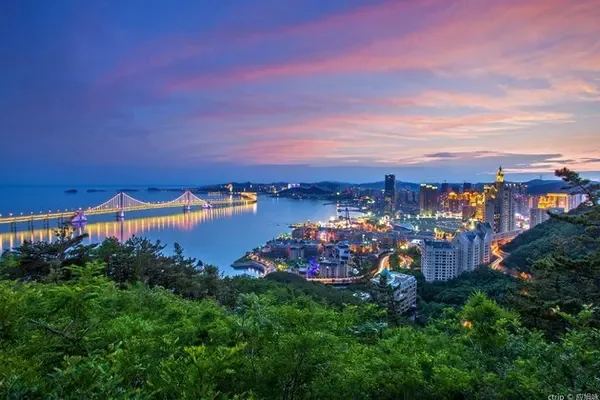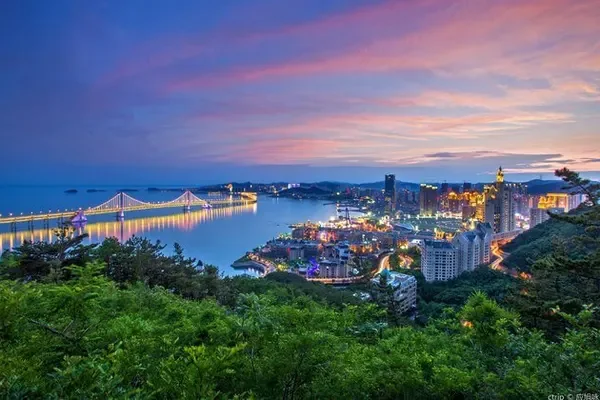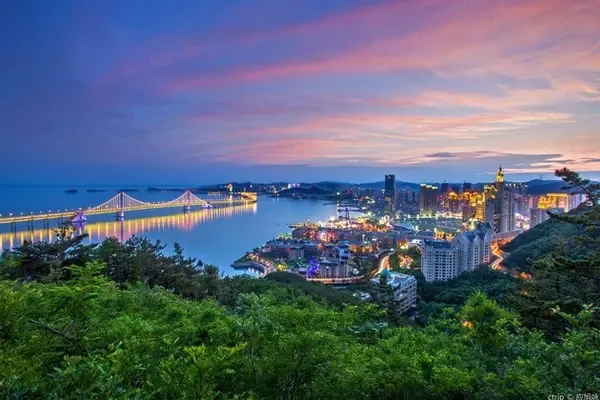Our Xinjiang self-driving tour is to selectively and focus on several places. The previous section introduced the travel situation in Yecheng, and this section introduces the sightseeing situation in Luntai Populus euphratica Forest Park and Hami City.
Luntai County is located at the southern foot of the Tianshan Mountains and the northern edge of the Tarim Basin. The terrain of Luntai is high in the north and low in the south, with a part of the Tianshan Mountains in the north and beaches on both sides of the Tarim River in the south, and the Tarim River runs through the south from west to east. Luntai County has well-developed transportation, with trunk lines such as Tuhe Expressway (G3012), G314 National Highway, Southern Xinjiang Railway, and Taklamakan Desert Highway (G216) passing through the county.
Luntai County has more than 400,000 mu of natural Populus euphratica forest known as "Tertiary Living Fossil". According to statistics, the vast majority of Populus euphratica in the world grows in China, and more than 90% of Populus euphratica in China grows in the Tarim River Basin in Xinjiang. Among them, the Populus euphratica forest along the Tarim River near Luntai is the most widely distributed and most luxuriant.
Populus euphratica is a deciduous medium-sized natural tree with slender and soft wood and broad and fragrant leaves. It is resistant to drought and waterlogging, and is tenacious in life. It is one of the rare tree species in nature. Fossils of Populus euphratica found in various places prove that it is a remnant plant of the Tertiary Period, with a history of more than 65 million years. The age of Populus euphratica can reach 200 years, the trunk is straight, the diameter can reach 1.5 meters, the height is 10-15 meters, and it is a thin shrub. Populus euphratica mostly grows in arid desert areas. In order to adapt to the environment, the young leaves of its young trees are narrow and long, while the leaves of old branches of big trees are round like poplars. When it gets old, it will gradually break off the top branches and trunk of the tree. , only four or five meters of the main trunk is kept, and the branches and leaves are still luxuriant, until they die of old age and wither, they still stand upright. In particular, Populus euphratica, which grows in the desert, is affected by wind, sand and drought. Its shape is vigorous and peculiar. There is a legend that "it will live for a thousand years, die for a thousand years, and fall for a thousand years".
Hami City is a prefecture-level city in the Xinjiang Uygur Autonomous Region. It is located in the eastern part of Xinjiang and is an important gateway for Xinjiang to the mainland. Hami was called Ximo (Ximu), Gurongdi, Kunmo in ancient times; Yiwu or Yiwulu in Han Dynasty; Yizhou in Tang Dynasty; Hamili in Yuan Dynasty; and Hami after Ming Dynasty. The Tianshan Mountains lie across the land of Hami, dividing the city into mountains, south and north. Forests, grasslands, snow-capped mountains, and glaciers in the north of the mountain are integrated, and the Hami Basin in the south of the mountain is an oasis on the alluvial plain, surrounded by the surrounding Gobi Desert. Hami has a temperate continental arid climate. The south of the mountain is dry and hot with very little precipitation; the north of the mountain is shady and cool with a little more precipitation.
On October 11, 2020, we drove more than 800 kilometers from Yecheng along the expressway to Luntai County; on October 12, we crossed the Tarim River from Luntai County along G216 (desert highway), and first arrived at the south bank of the Tarim River. At a place where dead Populus euphratica forests are relatively dense, feel the desolate scene of dead Populus euphratica forests. At noon, have lunch near Tahe Bridge in Lunnan Town on the north bank of the Tarim River. In the afternoon, visit Tarim Populus euphratica National Forest Park. Stay at Rui Hotel; travel from Luntai to Turpan on October 13; travel from Turpan to Hami on October 14, and visit Wubao Devil City near Hami on the way; rest in Hami for a whole day on October 15, repair vehicles, and return to the city Palace, museum visit.
The dead Populus euphratica forest in Luntai is located on the right side of the desert road (G216) about 10 kilometers across the Tarim River. When we visited Tarim Populus euphratica National Forest Park in 2016, the local villagers told us that it is far away from the Tarim River. The Populus euphratica forest is dead, a desolate scene. The last time we were here left a deep impression on us, and this time we revisited the old place, we still feel the revelation of life and death.






Tarim Populus euphratica National Forest Park is the largest original Populus euphratica forest park in Xinjiang, and it is also the most concentrated area of original Populus euphratica forest in the entire Tarim River Basin, with a total area of 100 square kilometers.
Entering from the park entrance, a road extends to the depths of the original Populus euphratica forest, and clusters and patches of Populus euphratica forests appear from time to time beside the road. The height is generally 5-8 meters, and the height can exceed 10 meters. Populus euphratica either bends and falls, or screams up to the sky, or stands alone, or stands row upon row, creating a spectacular scene.



















When we came in 2016, we could also drive into the park and look around at our own pace. Now self-driving cars are all parked in the parking lot at the entrance of the park. You can only take the park's tour bus to various attractions. Of course, you can also walk. However, this park is too big, and the efficiency of walking is too low.
Wubao Devil City is located in the south of Wubao Town, Yizhou District, Hami City, about 100 kilometers away from Yizhou District, Hami City. At present, from the gate of the Devil City Scenic Spot all the way to the south, a scenic road of more than ten kilometers is being built. Near the Skeshaer ruins, further ahead is the most primitive desert trail. We went forward for about two kilometers and stopped to take pictures in a typical place of Yadan landform. A car next to it stopped by the roadside. , actually got stuck in the car, we had to give up the best shooting time before the sun set to help them out of trouble, this shows that in the seemingly flat desert, there are dangers lurking everywhere, if this car hadn’t met us , as the sun goes down, things are going to be bad.
The Yardang landform attractions in Wubao Devil City are mainly laid out along the scenic road under construction. They are more concentrated near the Eskeshaer ruins. If you go deeper into the desert, the scenery may be better, but there are still pitfalls. car risk.














Hami Huiwang Mansion is located on the south side of Hami City, Hami Huicheng Township, the northeast corner of the original Huicheng. Historically, King Hami Hui was the head of the eight divisions of the Qing court back to Xinjiang. His palace was built in 1705, covering an area of more than 60 mu, and took 7 years. The building integrated the styles of Manchu, Han, Uighur, and Mongolian. , The beauty of architecture was unique in Xinjiang at that time. It was known as the "Little Forbidden City of the Western Regions" in history. However, the original palace was destroyed in the war in 1931. The Hami Palace we see now was rebuilt according to its original appearance in 2004. After the reconstruction The Hami Palace not only embodies the Islamic classical architectural style, but also integrates the architectural characteristics of the Han nationality. The high platform with earthen walls, glazed tile roof, flying eaves and bucket arches, and staggered gardens are palace buildings with architectural characteristics.











Hami Museum is located on the north side of the intersection of Huancheng West Road and Huancheng South Road in Hami City (opposite Hami Palace). The museum has a construction area of 12,000 square meters and is divided into exhibition halls and warehouses such as the History Hall and the Folklore Hall. There is the largest aggregate of pterosaur fossils in the world, as well as a bronze mirror with a sheep-shaped handle in the Han Dynasty. This bronze mirror was cast into a sheep-shaped handle and a round mirror in bronze, and then riveted together. This animal-shaped decoration has a strong grassland ethnic style.




The building of the Muqam Heritage Center next to the Hami Museum is also very distinctive.

———End of this section———



